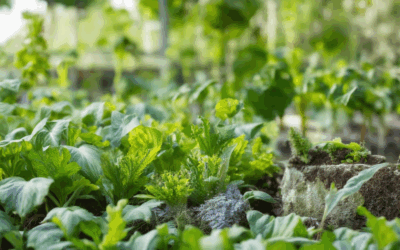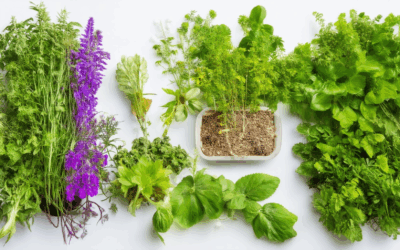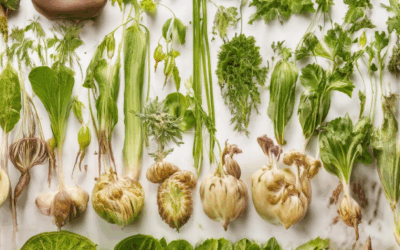Are you eager to transform your backyard into a thriving, sustainable haven? If you’re new to the world of permaculture, fear not—this practical guide will walk you through the essential steps to get started. Permaculture gardening isn’t just about growing plants; it’s a holistic approach to sustainable living that fosters biodiversity, reduces environmental impact, and provides fresh, organic produce right at your fingertips. Whether you’re looking to reduce your carbon footprint or simply create a more beautiful and productive outdoor space, permaculture for beginners offers a pathway to success. This comprehensive guide will cover everything you need to know, from understanding the core principles to designing and maintaining your own permaculture garden. With the right knowledge and a bit of effort, you’ll be well on your way to embracing this eco-friendly lifestyle and reaping the rewards of a self-sufficient garden.
Key Takeaways
– Conduct a thorough soil and site assessment to ensure your backyard’s suitability for permaculture.
– Plan a functional layout integrating edible and ornamental plants, utilizing methods like spiral gardens or layered planting.
– Select native, resilient plants suited to your climate and soil, prioritizing biodiversity and low maintenance.
– Implement water-saving techniques such as rainwater harvesting and mulching to enhance sustainability.
– Use natural fertilizers like compost and worm castings to nourish your garden without synthetic chemicals.
– Practice integrated pest control by companion planting and attracting beneficial insects to reduce reliance on harmful pesticides.
– Maintain regular care to monitor plant health, prune, weed, and ensure proper watering for long-term success.
– Add infrastructure like chicken coops and ponds to boost ecosystem health and attract wildlife.
– Adopt sustainable practices such as planting windbreaks and selecting cold-tolerant plants for resilience in varying conditions.
– Create a welcoming habitat for wildlife by planting native flowers, installing water sources, and providing shelter for birds and pollinators.
These strategies will guide you toward establishing a thriving permaculture garden, promoting biodiversity, and enjoying the benefits of sustainable, self-reliant gardening.
How to Start Permaculture
Permaculture is an eco-friendly gardening method that focuses on sustainability and working harmoniously with nature. Here’s a step-by-step guide to getting started:
- Plan Your Garden Layout
- Create a permaculture design that maximizes space and resources.
- Consider a permaculture layout plan tailored to your climate zone.
- Choose the Right Plants
- Select native plants suited to your region for optimal growth and adaptation.
- Learn about companion planting to enhance productivity and reduce pests.
- Prepare Your Soil
- Add organic matter like compost or worm farm to improve soil health.
- Composting breaks down organic waste and enriches the soil.
- Implement Water Management
- Set up drip irrigation systems for efficient water usage.
- Research and install appropriate watering solutions for your climate.
- Apply Mulch
- Cover plants with mulch to retain moisture and regulate temperatures.
- Use locally sourced mulch materials that suit your environment.
- Fertilize Naturally
- Use natural fertilizers like compost or fish emulsion.
- Apply fertilizers based on specific plant nutrient requirements.
- Manage Pests and Diseases
- Control pests and diseases using natural predators or biological controls.
- Introduce beneficial insects to maintain balance in your garden.
- Integrate Animals
- Include animals like chickens or ducks to aid in pest control and manure production.
- Animals contribute to the ecosystem and provide natural fertilizers.
- Maintain Regularly
- Keep weeds under control through regular pruning and weeding.
- Monitor and care for your garden to ensure long-term health.
- Support Biodiversity
- Aim to attract wildlife by creating habitats within your garden.
- Contribute to local biodiversity through sustainable practices.
Weaknesses of Permaculture
-
Initial High Costs
Establishing a permaculture system often requires significant upfront investment in tools, infrastructure, and education, which can be a barrier for some individuals.
-
Steep Learning Curve
Permaculture involves complex systems thinking and requires knowledge of ecological design, soil health, and plant interactions, which can be overwhelming for newcomers.
-
Long Implementation Time
Results take years to manifest, which may disappoint those seeking quick fixes or immediate returns on their investments.
-
Environmental Limitations
Not all landscapes are suitable for permaculture due to factors like climate, soil type, and available space, limiting its applicability in certain regions.
-
Variable Outcomes
Success depends heavily on local conditions and individual effort, leading to variability in results compared to conventional methods.
-
Pest and Disease Challenges
While permaculture promotes biodiversity, it can attract pests and diseases that require careful management to maintain balance and productivity.
The Three Principles of Permaculture
The principles of permaculture are a set of ethical guidelines that promote sustainable living and ecological harmony. Here are the three core principles:
-
Care of the Earth
Permaculture emphasizes the importance of caring for the Earth by using sustainable practices that enhance biodiversity and maintain soil health. This includes techniques like composting, mulching, and planting native species to support local ecosystems.
-
Care of People
At its core, permaculture is about caring for people. This principle focuses on creating communities that are equitable and inclusive, ensuring that everyone has access to resources and opportunities for growth. It also encourages cooperation and mutual aid among individuals.
-
Setting Limits to Population and Consumption
This principle recognizes the finite nature of our planet and advocates for responsible population growth and reduced consumption patterns. Permaculture promotes a lifestyle that aligns with the carrying capacity of the Earth while still supporting a high quality of life for all beings.
Converting Your Backyard to Permaculture
To successfully convert your backyard into a permaculture garden, follow these organized steps:
- Assess Your Property
- Test your soil’s pH levels and composition to determine its suitability for various plants.
- Identify areas that receive adequate sunlight and natural water sources like rainwater or streams.
- Design a layout that integrates edible and ornamental plants, maximizing space and functionality.
- Consider permaculture design methods like spiral gardens or layered planting for efficiency.
- Utilize vertical spaces with trellises or hanging baskets to accommodate limited flat areas.
- Select plants suited to your local climate and soil conditions, prioritizing native species for adaptability and reduced maintenance.
- Visit nurseries specializing in permaculture plants to find resilient varieties.
- Install rainwater harvesting systems to conserve water, especially in arid regions.
- Apply mulch to retain soil moisture and suppress weeds, enhancing water retention.
- Use compost from kitchen scraps and yard waste as a natural fertilizer.
- Set up a worm farm to recycle organic waste into nutrient-rich castings.
- Practice companion planting to deter pests and attract beneficial insects.
- Install birdhouses and insect hotels to encourage predator populations.
- Regularly monitor and water plants, especially during dry periods.
- Prune plants to maintain health and remove dead growth.
- Weed regularly to provide adequate space and light for plant growth.
- Consider adding a chicken coop for pest control and fertilization.
- Introduce a small pond to attract wildlife and enhance ecosystem balance.
- Plant windbreaks and shade structures to protect plants from harsh weather conditions.
- Select hardy plants that can withstand drought and cold temperatures.
- Attract pollinators by planting flowering plants and installing bee habitats.
By following these steps, you can transform your backyard into a thriving permaculture garden, creating a sustainable ecosystem that benefits both you and the environment.
Understanding the Difference Between Homesteading and Permaculture
Homesteading and permaculture are both rooted in the principles of sustainability and self-sufficiency, but they differ significantly in their approaches and objectives. Below is a breakdown of their key distinctions:
- Goals:
- Homesteading often emphasizes self-reliance and living off the land, focusing on growing food, raising livestock, and developing skills for survival and independence.
- Permaculture prioritizes creating sustainable, productive ecosystems that work with nature, often through designing gardens and landscapes that are both beautiful and functional.
- Focus:
- Homesteading tends to concentrate on annual crops and traditional farming practices, often requiring more active intervention and labor.
- Permaculture emphasizes perennial plants, layered systems, and natural processes to create resilient ecosystems that require less maintenance.
- History and Origin:
- Homesteading has historical roots in pioneer life and the idea of settling and adapting to a new environment, often involving subsistence farming.
- Permaculture was developed more recently by individuals like Bill Mollison, drawing from traditional knowledge and modern ecological principles.
- Scope and Scale:
- Homesteading can vary greatly in size, from small urban gardens to large rural properties, depending on the family’s needs and resources.
- Permaculture is typically applied on a smaller scale, though it can be adapted to larger properties, focusing on creating harmonious, long-lasting ecosystems.
Both homesteading and permaculture share a commitment to environmental stewardship and sustainable living, but they approach these goals through distinct methods and philosophies. Whether you’re drawn to the self-reliant lifestyle of homesteading or the eco-friendly design of permaculture, both paths offer meaningful ways to connect with the land and create a more sustainable world.
Creating a Natural Habitat in Your Backyard
To transform your backyard into a thriving natural habitat, follow these organized steps:
- Assess Your Site: Evaluate your yard’s sunlight, soil type, and existing features to determine which native plants and wildlife will thrive.
- Plant Native Species:** Select plants adapted to your region to provide food and shelter. Consider milkweed for butterflies and wildflowers for pollinators.
- Install Water Sources:** Maintain or create a pond and add a birdbath to attract birds and other creatures needing hydration.
- Add Shelter:** Leave old fencing for perching and install nest boxes near the shed to support bird populations.
- Offer Food Sources:** Plant berries and fruit trees, and grow vegetables like tomatoes to encourage diverse wildlife visitors.
- Create Hideouts:** Use piles of wood or rock crevices to provide safe spaces for small animals and insects.
- Avoid Harmful Chemicals:** Refrain from using pesticides and herbicides; opt for natural composting to maintain soil health.
- Engage in DIY Projects:** Build a bird feeder from repurposed materials and establish a butterfly station with nectar plants for educational fun.
- Maintain Efficiently:** Implement drip irrigation for low-water needs and monitor the ecosystem regularly.
- Collaborate Locally:** Work with neighbors to create a connected ecosystem and participate in community conservation efforts.
- Document Progress:** Keep a journal of plantings, wildlife observations, and adjustments to track success and gather insights.
By thoughtfully implementing these strategies, you’ll create a welcoming space for a variety of wildlife, fostering biodiversity and enhancing your outdoor environment.








0 Comments